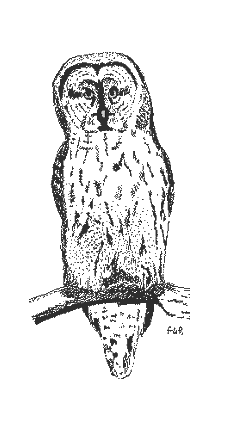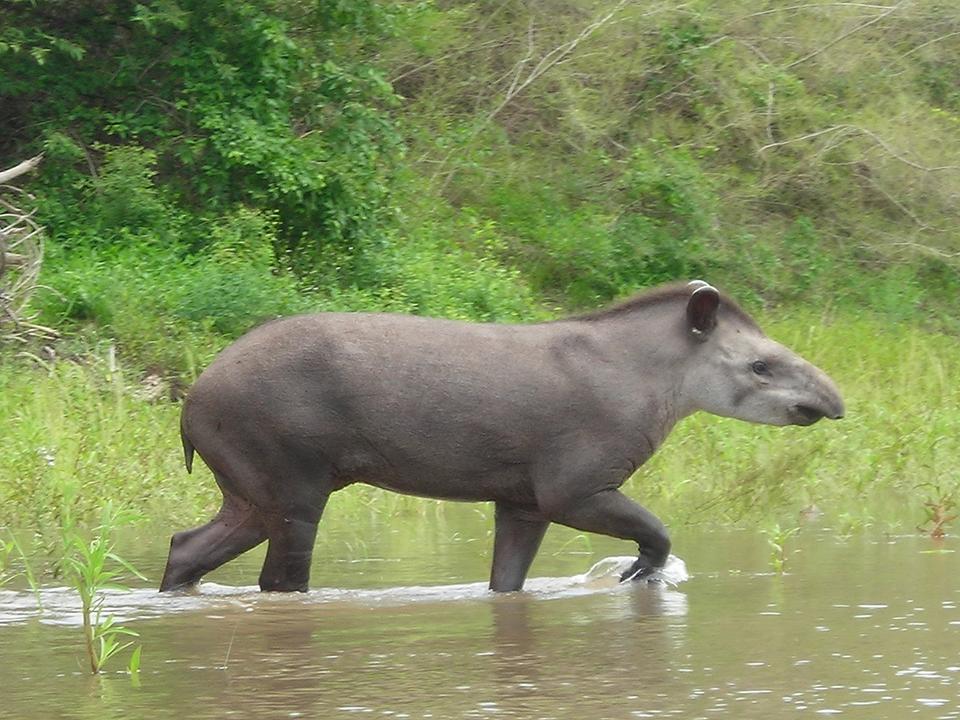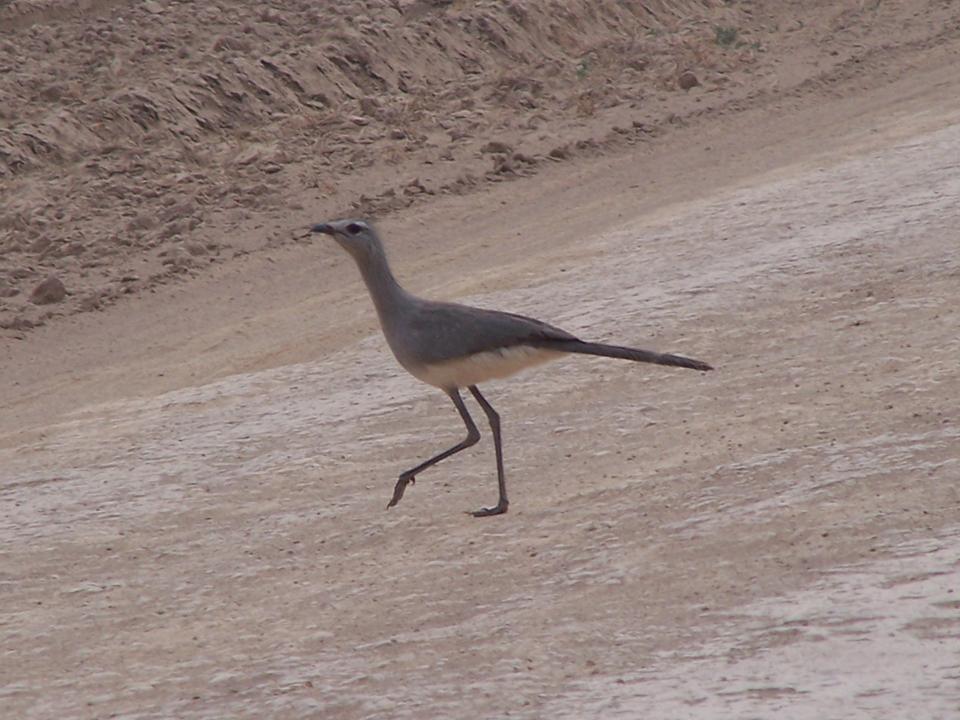Designed by Paul Smith 2006. This website is copyrighted by law.
Material contained herewith may not be used without the prior written permission of FAUNA Paraguay.
Photographs on this web-site were taken by Paul Smith and Marianella Velilla and are used with permission.
CHACO EXPLORER TOUR
Introduction:
The perfect way to get to know the Paraguayan Chaco without roughing it, the Chaco Explorer tour is designed to pick up a wide variety of wildlife from the Chaco endemic birds to myriad reptiles and amphibians. The tour begins with a drive through the lush palm savannas of the Humid Chaco, a paradise for waterbirds, with visits to the IBA Central Chaco lagoons area and two nights at remote PN Teniente Enciso in the deepest Dry Chaco.
Black-legged Seriema (right) Chunga burmeisteri
FAUNA Paraguay tours are recommended by:
FAUNA Paraguay eco-tours are promoted by:
|
|
|
|
 |
Birdfinders |
|
Main Targets:
For birders our targets are the Chaco "Big Six" - Black-legged Seriema, Black-bodied Woodpecker, Chaco Owl, Quebracho Crested Tinamou, Crested Gallito and Spot-winged Falconet. Birders might expect a list of somewhere in the region of 200 species at peak times of year. Mammal lovers will hope to see Puma, Plains Vizcacha and Lowland Tapir. Reptiles and amphibians are seasonal in appearance. We may hope to see Pointed-nosed False Chameleon and the remarkable Paradox Frog, a species where the tadpole is twice the size of the adult.
Recommended duration:
To get the best from this tour we suggest at least 7 days. A minimum of 5 days is required to complete it. This tour is available all year.
Best time to visit:
The Chaco is action-packed year round. Though it doesn´t rain much up here, the "rainy season" is from October to November when mud can occasionally be a problem. However this is also the best time of year for reptiles and amphibians. The Chaco is extremely hot from October to March. Temperatures are more pleasant during the winter months (April to September), which is also a great time of year for migrant waterfowl including flocks of wintering Greater Flamingo.
Itinerary:
Day 1 - Wildife-watching along the Humid Chaco en route to Loma Plata. Optional night drive.
Day 2 - Visit to Laguna Capitán in the morning and Campo Maria Private Reserve in the afternoon. Night drive.
Day 3 - Visit to peccary breeding project at Fortín Toledo. Continue on to PN Tte Enciso. Optional night walk.
Day 4 - Morning at PN Tte Enciso. Afternoon visit to PN Médanos del Chaco. Night drive.
Day 5 - After lunch return to Loma Plata. Optional night drive.
Day 6 - Visit to Laguna Bombacha in the morning and Fortín Boquerón in the afternoon. Optional night drive.
Day 7 Return to Asunción and end of services
(Itineraries are subject to change according to levels of animal activity or client´s preference.)
What else might we see?:
We have a long drive ahead of us to the Central Chaco so we start out early. This will give us time to leisurely bird the roadside pools in the Humid Chaco which are often replete with waterbirds. We might expect to see various heron species, Jabiru, Maguari and Wood Storks, Roseate Spoonbill, Savanna, Great Black and Black-collared Hawk, Snail Kite, Limpkin, Giant Wood-Rail, Wattled Jacana, Plumbeous, Bare-faced and Buff-necked Ibis amongst the huge flocks that gather. We´ll make a brief stop for lunch at Pirahú, famous nationally for its empanadas and also a decent birding stop, we might see Swainson´s and Brown-crested Myiarchus, Yellow-billed Cardinal, Vermillion Flycatcher, White-faced Whistling-Duck and Brazilian Duck amongst others whilst Spectacled Caiman is another possibility.
We arrive in the Central Chaco mid-afternoon and there will be time to clean up before heading out on our night drive. Nightdrives in search of mammals are a major bonus on this tour and as many as ten species in a single evening may be recorded, species like Geoffroy´s and Little Spotted Cat, Three-banded, Six-banded and Lesser Hairy Armadillo, Crab-eating and Azara´s Fox, Crab-eating Raccoon, Grey Brocket Deer, Capybara, White-lipped and Collared Peccary and Chaco Mara being frequently encountered. Of course we´ll also be looking for birds too - Great Horned Owl, Tropical Screech-Owl, Scissor-tailed and Little Nightjar, Pauraque for example. At certain times of year this area is alive with a chorus of frog song. We may see Paradox Frog, Fuscous Frog, Horned Toad and Granulated Toad, Shovel-nosed Chamber Frog and Weeping Dwarf Frog amongst others. Reptiles might include Green Jungle Runner, Western Collared Spiny Lizard and Pointed-nosed False Chameleon.
The following morning we´ll begin our Dry Chaco birding schedule by visiting a series of salt lagoons which together make up the Central Chaco Lagoons Important Bird Area. In winter these are great for migrant ducks, such as White-cheeked Pintail, Black-headed Duck, Ringed Teal, Rosybill, Red Shoveler and of course other waterbirds such as waders, Silvery and White-tufted Grebe and at Campo Maria huge wintering flocks of Chilean Flamingo and Coscoroba. The surrounding Chaco scrub and forest is inhabited by a very particular avifauna - we´ll be looking out for Scimitar-billed and Great Rufous Woodcreeper, Red-billed Scythebill, Stripe-backed Antbird, Great and Barred Antshrike, Golden-green, Checkered, Cream-backed and White-fronted Woodpeckers, Lowland Hepatic and White-lined Tanagers, Chaco Earthcreeper, Black-capped Warbling-finch, Orange-backed Troupial and Many-coloured Chacofinch. Other characteristic species of the area include Lark-like Brushrunner, Solitary Cacique, Crested Hornero and Chaco Chachalaca. The central Chaco is also a superb place for tinamous not least the chaco endemic Brushland Tinamou, White-bellied Nothura and the "Chaco Nothura". At Fortín Toledo we´ll visit the captive breeding programme of the endangered Chaco Peccary (considered a fossil species until it was discovered alive and well in the Paraguayan Chaco in 1976) but also scour the area for the first of our Big 6 - the Black-bodied Woodpecker. Parrot species we are likely to see include Scaly-headed Parrot, Nanday, Blue-crowned and Monk Parakeets and Turquoise-fronted Amazon.
Arrival at PN Tte Enciso greatly increases our prospects of seeing the remaining five of the Chaco "Big 6" species - Quebracho Crested-Tinamou, Black-legged Seriema, Chaco Owl, Crested Gallito and Spot-winged Falconet are all easier to see here than in the Central Chaco, whilst other species such as the popular Black-crested Finch, Cinereous Tyrant, Stripe-crowned Spinetail, Harris and Zone-tailed Hawks, endangered Crowned Eagle and the handsome Black-backed Grosbeak are also possible additions to the list. Enciso is also a fantastic mammal-watching spot with Puma, Jaguar and Lowland Tapir regularly encountered here, along with other strictly Dry Chaco species such as Plains Viscacha, Greater Hairy Armadillo and Chaco Peccary. Rococo Toad is common here, as are reptile species including Chaco Leaf-footed Gecko, Chaco Straight-toed Gecko and the gorgeous Four-toed Whiptail Lizard.

What does it include?:
The price includes pick-up from and return to Asunción hotel, accommodation, transport, food, non-alcoholic drinks and guiding fees.
It does not include travel insurance, personal expenses, alcoholic drinks or travel costs incurred before the beginning of the tour or after return to Asunción.
For further information or to book your tour email us at faunaparaguay@yahoo.com.ar
Ask about off-season discounts (15 Feb-15 July).
Lowland Tapir Tapirus terrestris




